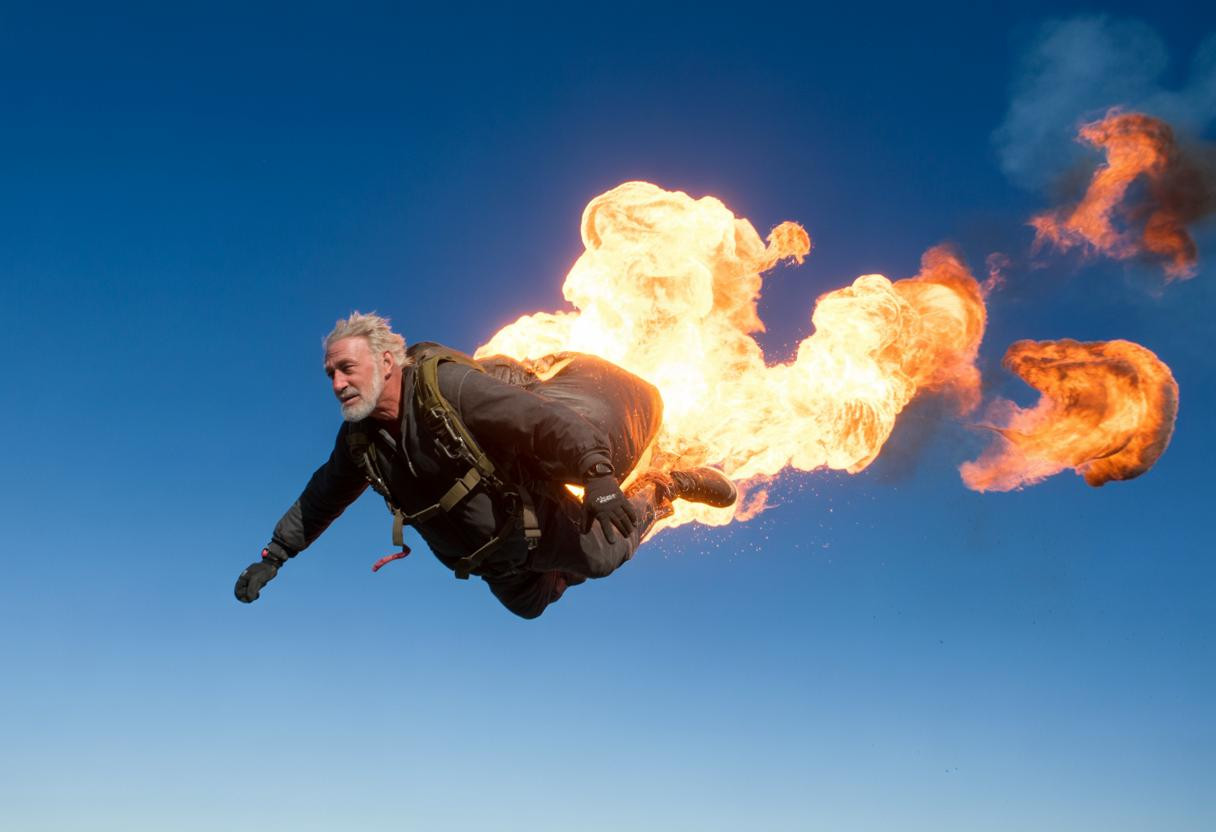At 62 years old, Tom Cruise just shattered expectations by earning a Guinness World Record for performing 16 burning parachute jumps during the filming of Mission: Impossible – The Final Reckoning. Each death-defying leap involved jumping from a helicopter at 7,500 feet with a fuel-soaked parachute that ignited mid-air, burned for exactly 2.5 seconds, then disintegrated—requiring split-second timing to deploy a backup chute and survive.
The stunt that redefined Hollywood’s safety boundaries
This isn’t just another Hollywood spectacle. Cruise’s record-breaking achievement required precise engineering and FAA compliance, with specialized Parachuting Coordinators and Ground Safety Contacts managing every aspect of the jumps in South Africa’s Drakensberg mountains.
The technical complexity becomes staggering when you consider Cruise also carried a 50-pound camera rig during some jumps to capture close-up footage. Wade Eastwood, the film’s stunt coordinator, emphasized that this level of authenticity creates emotional engagement impossible to achieve with CGI or stunt doubles.
What makes this particularly remarkable is how it builds upon Cruise’s previous death-defying feats—from hanging off the Burj Khalifa to the helicopter chase sequence that had audiences gripping their seats worldwide.
Why audiences crave authentic danger over digital effects
The psychology driving our fascination with risk
The burning parachute stunt taps into something deeper than entertainment—it satisfies our craving for vicarious adrenaline and authentic heroism. Unlike influencer culture’s dangerous pursuit of extreme content for social media validation, Cruise’s stunts serve a narrative purpose while maintaining rigorous safety protocols.
This psychological dimension explains why Mission: Impossible – The Final Reckoning has already crossed $360 million at the global box office. Audiences instinctively recognize the difference between computer-generated spectacle and genuine human achievement.
The economic impact of death-defying authenticity
Studios now face a fascinating paradox: Cruise’s stunts generate enormous marketing value and ticket sales, but they also create exorbitant insurance premiums and liability concerns. The financial calculations become complex when considering insurance implications for high-risk professions like extreme stunt performance.
The hidden innovations behind impossible stunts
The burning parachute mechanics required breakthrough engineering in controlled fuel ignition and rapid deployment systems. These innovations extend far beyond Hollywood—they’re already influencing emergency parachute technology and aerospace safety protocols.
Safety hierarchies included real-time weather assessment, landing zone analysis, and specialized fire-resistant materials. The integration of safety protocols in high-risk activities demonstrates how entertainment industry innovations often translate into life-saving applications.
What this means for the future of action cinema
Setting impossible standards for authenticity
Cruise’s record creates a new benchmark that may be impossible for other actors to match. This raises questions about whether the industry is pushing human limits too far in pursuit of authentic spectacle.
The technology transfer effect
The precision timing systems developed for these stunts are already being studied for emergency response applications. Rapid parachute deployment innovations could save lives in aircraft emergencies or military situations.
The lasting impact beyond entertainment
Tom Cruise’s burning parachute record represents more than a publicity stunt—it’s a paradigm shift in how we balance human achievement with technological safety. While this may be his final Mission: Impossible film, the standards he’s set will influence action cinema for decades, proving that sometimes the most valuable innovations come from pushing the absolute limits of human possibility.
